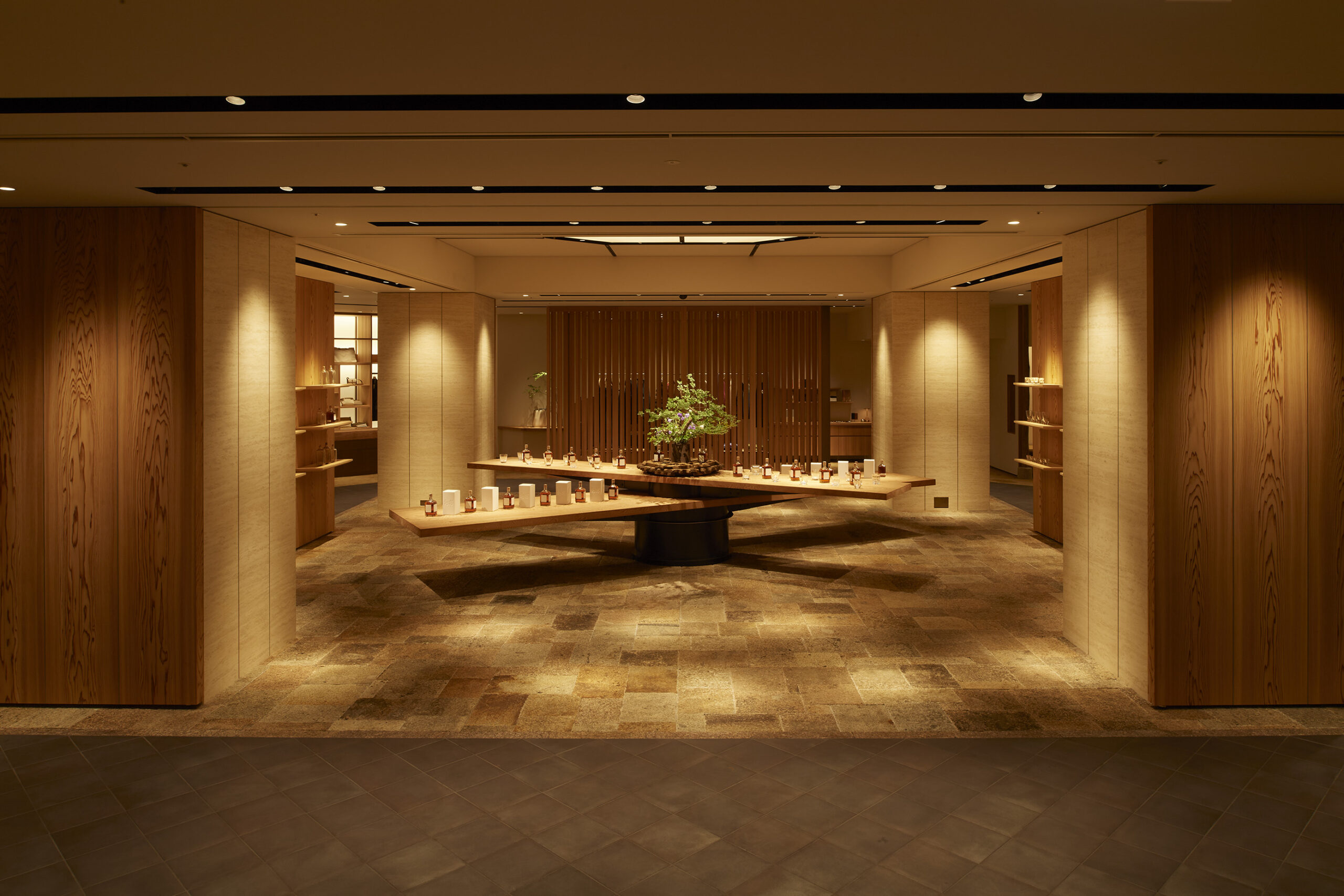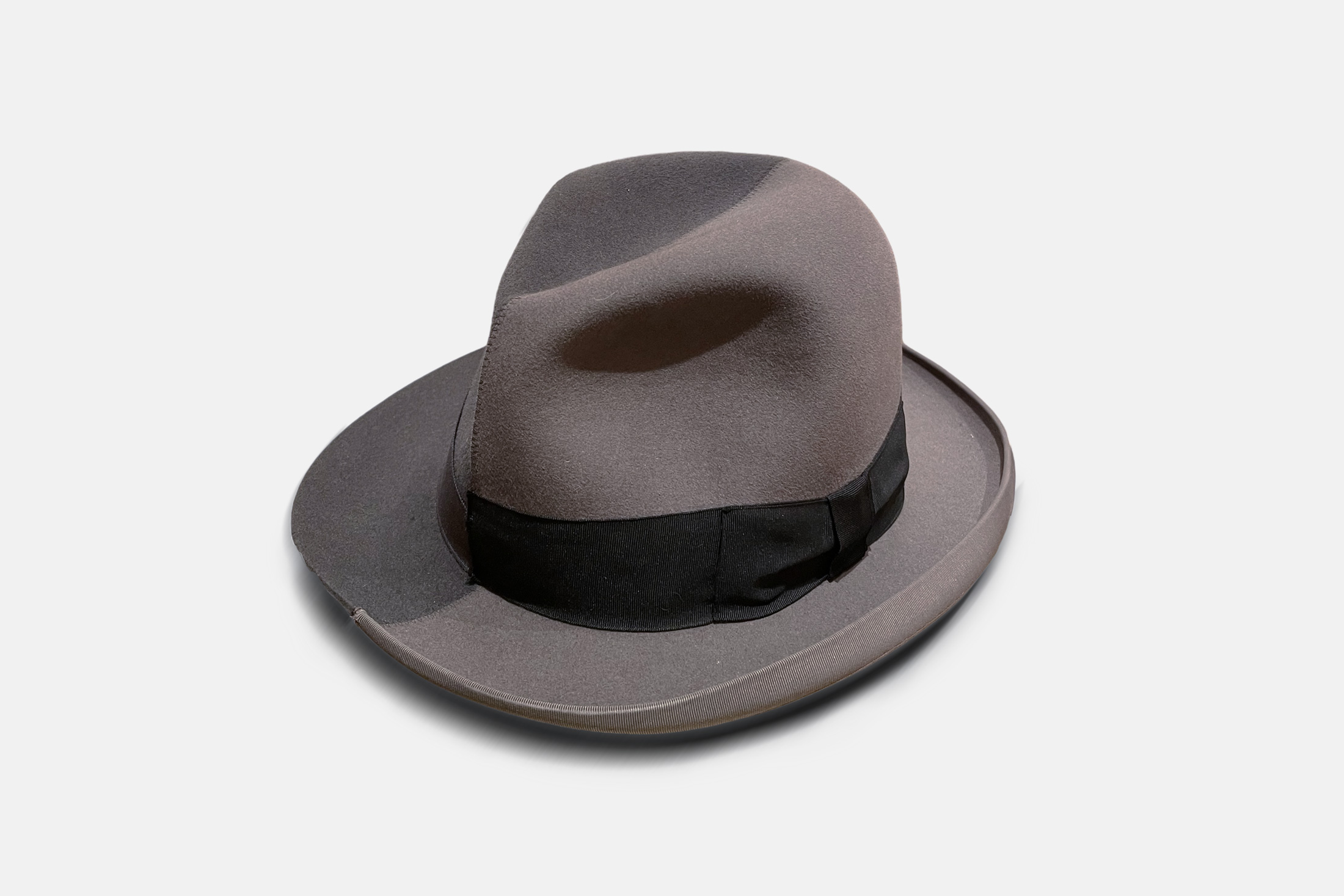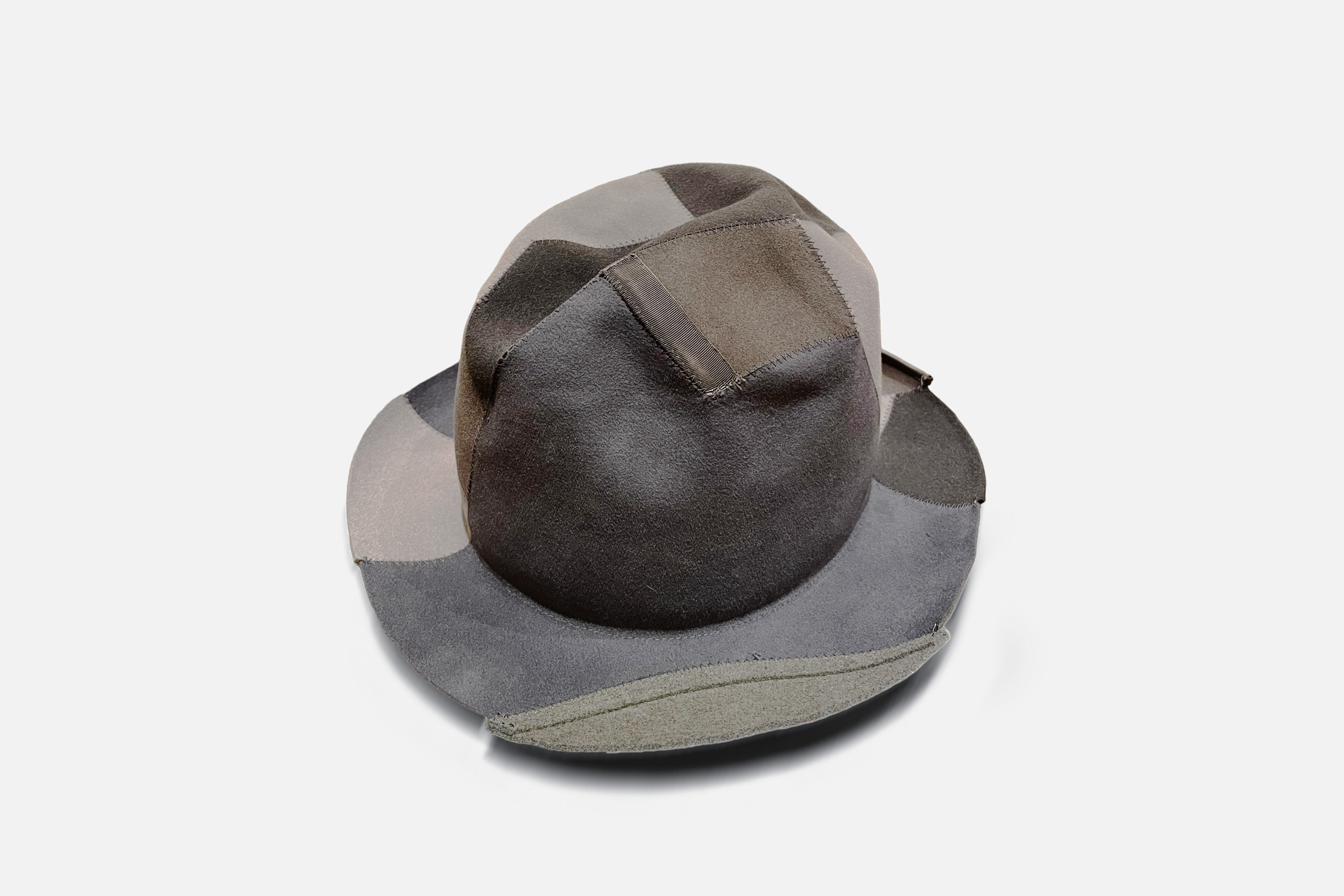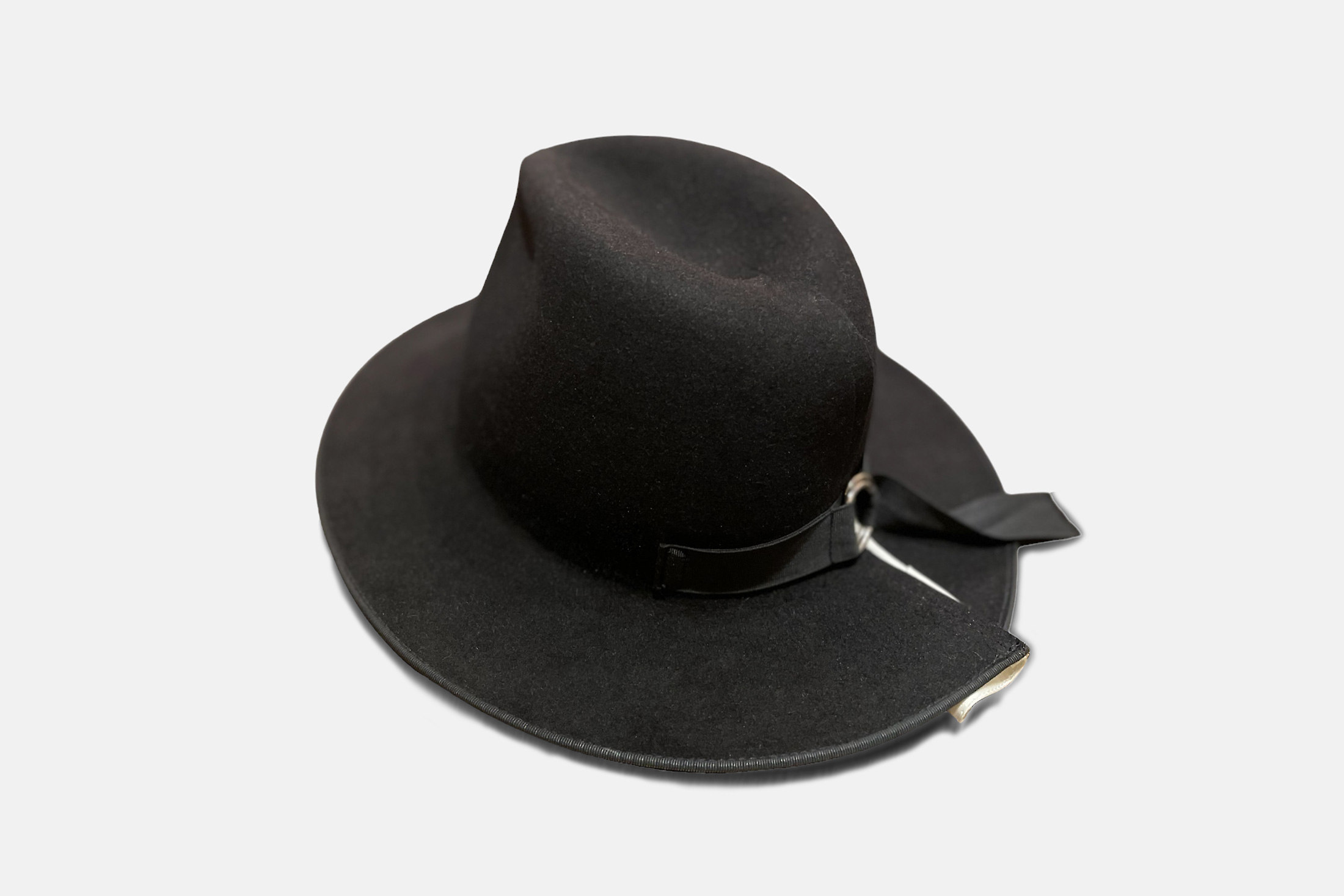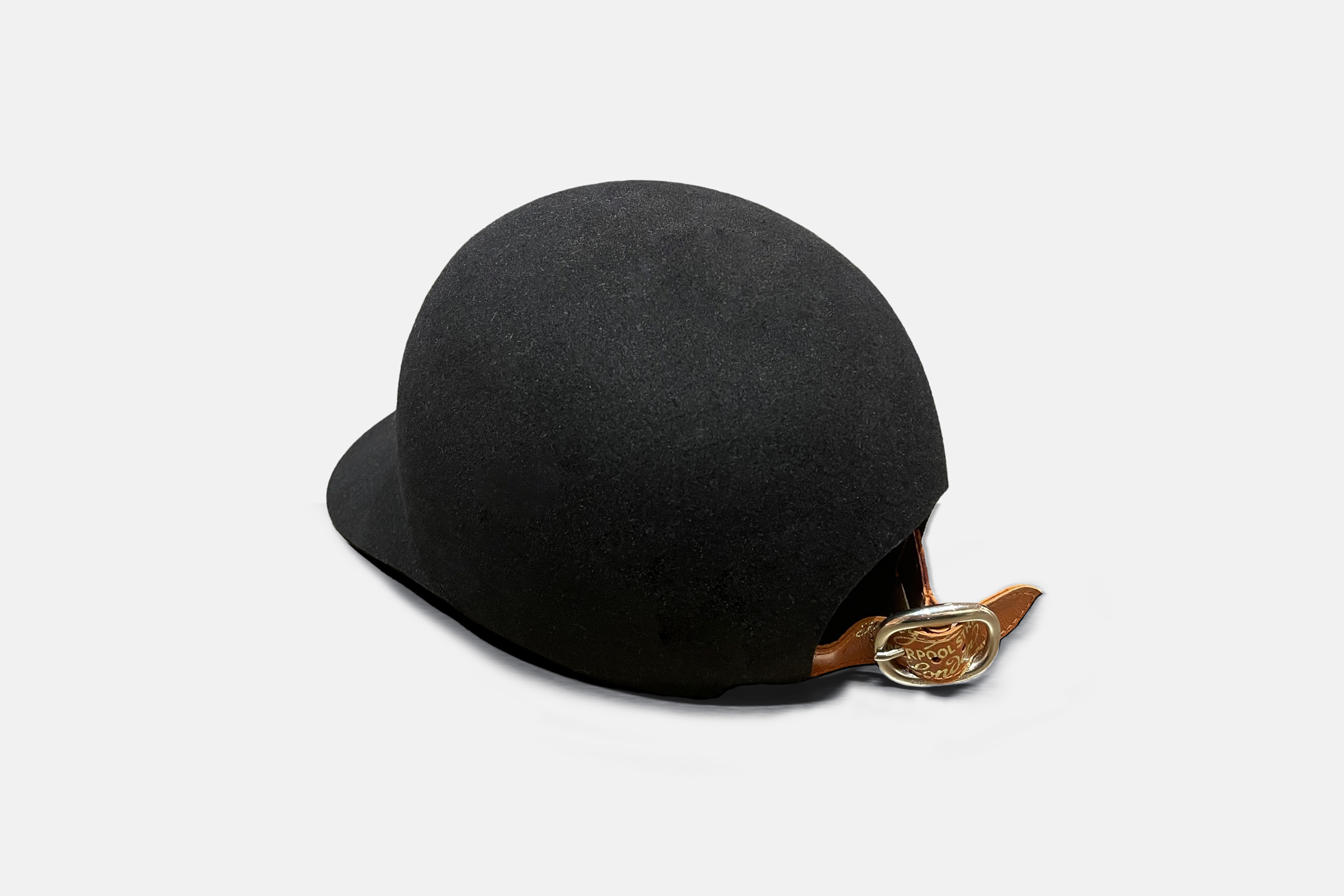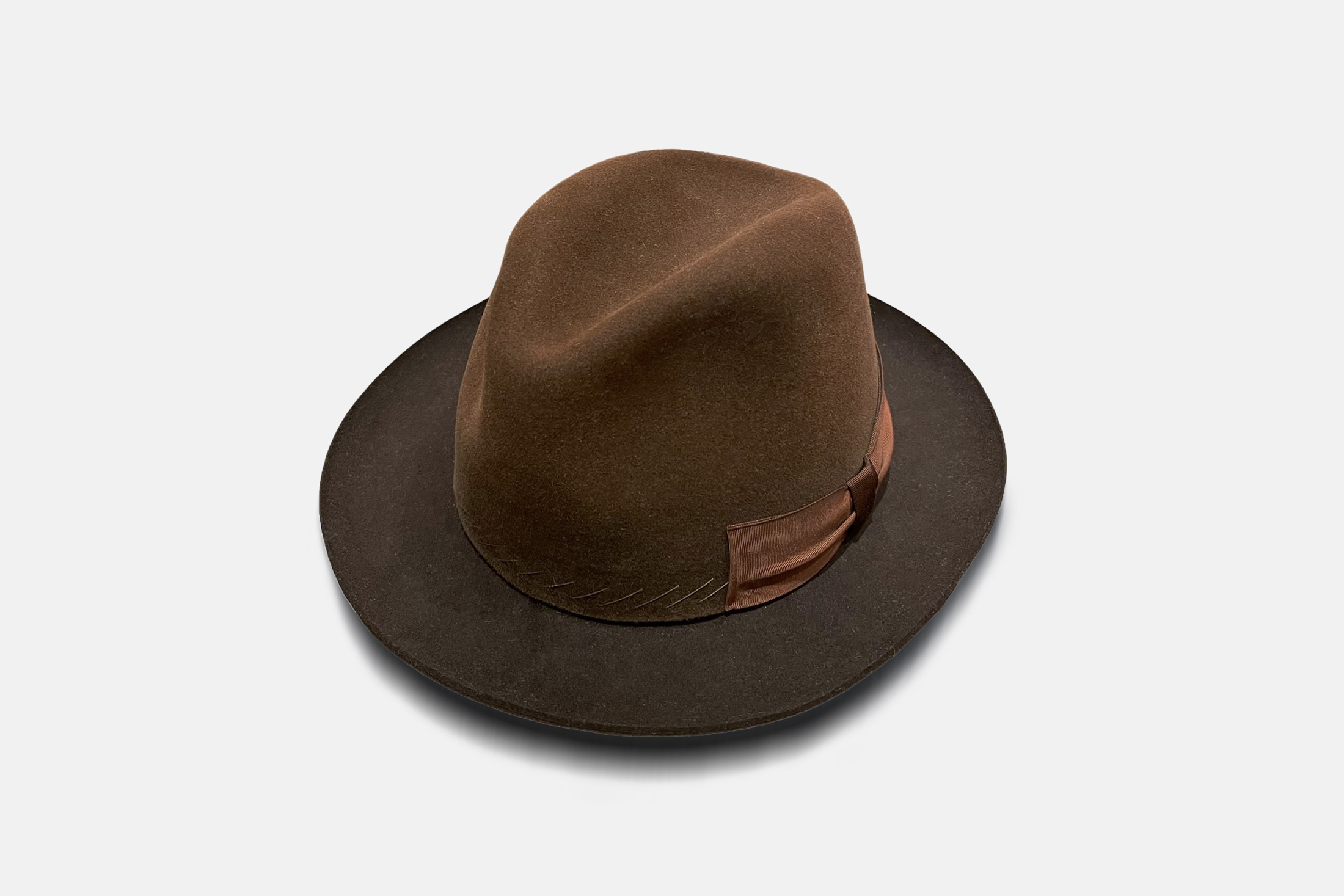ANSWER IT
#004
2024.07.23
未来の手仕事に対する一つの回答
“answer It”最新作からみる創作背景
2021年から帽子作りの未来や環境のために始動したプロジェクト“answer It”。7月20日に発表された最新作5点を紹介しながら、環境に配慮しつつ、長期的な視点で持続可能な帽子作りを目指すKIJIMA TAKAYUKIの美意識を反映した独自のスタイルが誕生した背景を紐解く。
A Response to the Future of Handcraft
The Creative Background of the Latest “answer It” Collection
Initiated in 2021, the project “answer It” aims to shape the future of hat-making with a focus on environmental sustainability. This article introduces the latest five pieces unveiled on July 20th. It delves into how KIJIMA TAKAYUKI’s unique style, reflecting a long-term vision for sustainable hat-making, came to life.
10年単位の未来を見据えて誕生した
新ライン“answer It”の考え方
そもそも“answer It”は、時代の要請ともいえる複合的な背景から始まった。パンデミックや紛争による社会情勢の変化で、東ヨーロッパのファクトリーの閉鎖や価格高騰による材料調達の困難に直面したことが契機となり、長期的な目線で帽子作りの未来に投資するためにスタートしたプロジェクトなのだ。
ディレクターの梶は、「材料供給がコストが高騰する状況に対して『世の中に既にあるものを活用していく』という考え方が生まれました。ヴィンテージの帽子には今では生産されていない良質な素材が使われており、これらを有効活用することで、新たな価値を創造できる」と語る。
梶曰く、「現行の素材の質が価格と見合わなくなっている現象は10年前から始まっていた」という。中国や東ヨーロッパの生産状況やマーケットの縮小、後継者不足によりファクトリーの閉鎖が続き、さらにパンデミック後の国際的な紛争により材料の調達が一層難しくなっていた。こうした状況に危機感を抱き、未来の手仕事を守るために目を向けたのは、これまでの時代の中で市場で高値取引された素材だ。
「海外のヴィンテージの帽子には、今ではもう生産されてないまたは入手困難なとてもいい素材を使用されているものが多い。それがワゴンの中で、ほこりをかぶって形も崩れた状態で販売されている。これをどうにか有効活用できないかと考えました」。
Designed with a Decade-Long Vision
The Philosophy Behind the New Line “answer It”
The project “answer It” emerged from a complex backdrop driven by the demands of our times. The pandemic and various conflicts caused significant shifts in the social landscape, leading to the closure of factories in Eastern Europe and the challenges in procuring materials due to skyrocketing prices. This situation prompted the launch of a project aimed at investing in the future of hat-making with a long-term perspective.
Director Kaji explains “In response to the rising costs of material supply, the idea of utilizing what already exists in the world emerged. Vintage hats often use high-quality materials that are no longer produced today, and by effectively repurposing these, we can create new value.”
Kaji further notes, “The phenomenon of current materials not matching their prices began about ten years ago.” The production conditions and market shrinkage in China and Eastern Europe, coupled with a shortage of successors, led to factory closures. The international conflicts post-pandemic further complicated material procurement. In light of these circumstances, Kaji felt a sense of urgency to preserve future craftsmanship by turning to materials that had historically been highly valued in the market.
“Many vintage hats overseas use materials that are now either no longer produced or very hard to obtain. These hats, often dusty and deformed, are sold in bins. We thought about how we could effectively repurpose them.”
プロダクトへの落とし込み
制作工程はすべて職人の手で行われ、一点一点丁寧に仕上げられる。オリジナルの帽子の「使える部分」や「特徴」を最も重視し、“answer It”用に収集したオリジナルの素材を活かし、新たにベルトやトリミングリボンなどに作り替えるのだ。二つの異なる素材の帽子をドッキングして作るものは通常のインラインでは行わないが、KIJIMAの文脈を踏襲して貴重な材料やパーツを再利用し、新たな帽子を創り出している。
もっとも素材がどれだけ希少であっても、時代性にフィットしないプロダクトでは取り組む意味がない。「生地が変わると伸び方が変わるため、ドッキングする技術や、木型を使用し成形しながら、素材の持つ伸縮性などの特徴を職人が一点一点確かめながら見極め、最終仕上げを行っています」
こうした積み重ねによってKIJIMAらしさが際立つ製品が完成するのだ。
Concept of products
The production process is entirely handcrafted by skilled artisans, with each piece carefully finished. The “usable parts” and “characteristics” of the original hats are prioritized, transforming the collected vintage materials into new belts or trimming ribbons for the “answer It” collection. While combining two different materials into one hat is not typical for their standard line, KIJIMA adheres to its philosophy by repurposing valuable materials and parts to create new hats.
Regardless of how rare the materials are, if the product does not fit within contemporary trends, the effort is in vain. “When the fabric changes, so does its stretch. Therefore, our craftsmen meticulously examine and shape each material, using molds to account for the stretch and other characteristics, before completing the final product.” This meticulous approach brings out the distinctive KIJIMA style in each piece.
1. オリジナルをクリーニングし、バラす。
Clean and disassemble the original hat.
2. 汚れやカビなどついたものは排除し、現行の材料を補填する
Remove stains and mold, supplementing with current material
3. 異なるオリジナルをドッキングしたり、パッチワークしたりしながら本体を作成していく。
Combine different originals or create patchwork to form the main body
4. 最後にanswerItのスタンプと手書きの下げ札をつける。
Attach the “answer It” stamp and a handwritten tag.
今回お披露目となる新商品の特徴
7月20日、銀座・和光の地階フロアがリニューアルオープンした。伝統と革新の文化が根付く銀座・和光が新たに掲げる「メイドインジャパン」、「クラフトマンシップ」、「SDGs」といったコンセプトに共感し、30〜40代の“マインドリッチ”な顧客層に向けて新たに作り上げた5アイテムを紹介していく。
The Features of the New Products
On July 20th, Ginza Wako’s B1 floor reopened with a renewed concept embracing “Made in Japan,” “Craftsmanship,” and “SDGs.” In line with Wako’s new direction, KIJIMA TAKAYUKI created five items aimed at the “mind-rich” demographic in their 30s and 40s.
# 1 A-30
異なる2つのベース使用したドッキングフェドラハット。それぞれのサイズが非常に小さかったため、素材に負荷がかからない手法で一度木型に入れ直し、バランスを整えてから縫製。リボン、革スベリもオリジナルの物を使用している。クラシックなシルエットを持ちながらも、モダンな感性を取り入れたデザインが特徴です。切り返しパターンが目を惹く、エレガントな仕上がりはどんなシーンにもマッチする。
This docking fedora hat uses two different bases. Due to the small sizes of the original hats, they were reshaped using molds to balance them before sewing, ensuring no strain on the materials. The ribbon and leather sweatband are also original. The design features a classic silhouette with modern sensibilities, characterized by eye-catching patterns and an elegant finish suitable for any occasion.
# 2 A-31
生産の過程で生まれる端切れを木型にあてながら一つ一つパーツを繋ぎ合わせたマウンテンハット。様々なベースのディテールをあえて残すことで、既製品では見ることのできない表情に。独特のテクスチャと色合いを実現した。パッチワークやドッキングの技術が際立ち、視覚的にも楽しめるデザイン。カジュアルなスタイルからフォーマルな装いまで、幅広いシーンで主役となる逸品。
This mountain hat is crafted by piecing together scraps generated during production, each part carefully fitted to a mold. By intentionally retaining various base details, it presents a unique texture and color palette not found in mass-produced items. The standout patchwork and docking techniques make it visually appealing, suitable for both casual and formal styles.
# 3 A-32
クラシックなベースを使用したブランドの定番であるアジャスターハット。アジャスターのテープはオリジナルのリボンを、生地部分はライナーを流用。90年代のイタリアから仕入れた素材の質感はシンプルでありながらも、細部にわたる丁寧な作りによって、着用者にあったサイズ調整が可能に。機能的な付加価値の高い逸品。
This adjustable hat, a staple of KIJIMA, uses a classic base. The adjustable tape is made from original ribbons, and the fabric part repurposes liners from the 90s sourced from Italy. The material’s texture is simple yet meticulously crafted, highlighting the wearer’s personality. It is a functional and highly valuable item.
# 4 A-33
サイズの小さいフェドラを使用したフェルトキャップ。ロンドンのヴィンテージ素材を使用し、独特の風合いと歴史を感じさせる。アジャスターのベルトはオリジナルの革スベリを流用。内側のテープ(スベリ)はオリジナルのものと機能性の高いフィールドセンサーのコンビ仕様。古き良きエッセンスを現代に甦らせたデザインは、時代を超えた魅力を持っている。
Using a small-sized fedora, this felt cap incorporates vintage materials from London, exuding a unique texture and historical charm. The adjustable belt is made from the original leather sweatband, with a combination of original tape and high-function field sensors inside. The design, which revives the essence of the past, possesses timeless appeal.
#5 A-34
異なる2つのベースを使用したドッキングフェドラハット。2ピースという伝統的な製法で作成され、ハンドステッチをあえて隠さずデザインの一部することで素材感とユニークなシルエットが特徴的になる。どんなスタイルにもアクセントを加える一品だ。
This docking fedora hat uses two different bases and is crafted using the traditional two-piece method. By intentionally leaving the hand-stitching visible as part of the design, it highlights the material’s texture and unique silhouette, adding an accent to any style.
answer Itのこれから
「一つの帽子ブランドが環境やサプライチェーンに大きな影響を与えることは難しいかもしれません。ただ実際に行動することで、現状や未来に対する我々の考え方を広めることができます。そのプロセスを自然に行いたい。なぜならプロダクト自体が『かっこいい、美しい』ことが1番大切だから。我々のような企業が担うべき役割はそこだと考えています」と梶は語る。将来的にはSDGsやアップサイクルの価値を伝えながらも、帽子として長く愛されるものづくりを目指している。
「現状のフェーズでは、ビフォーとアフターが分かりやすい製品を提供していますが、“answer It”やKIJIMA TAKAYUKIの取り組みを広く知ってもらうために、材料の供給を確保しつつ、10年単位で自然に受け入れられる土壌作りをしたいと考えています」
そう、アップサイクルという言葉がパンデミック以降に世間に認知されはじめた今、その価値観が当たり前になる日まで、“answer It”を通じたKIJIMAの飽くなき探求は続いていくのだ。
The Future of “answer It”
“A single hat brand may not significantly impact the environment or supply chain. However, by taking action, we can disseminate our thoughts on the current state and the future. We want to do this naturally because the most important thing is that the product itself is ‘cool and beautiful.’ That, we believe, is the role companies like ours should play,” Kaji says. Moving forward, the aim is to communicate the values of SDGs and upcycling while creating hats that are loved for a long time.
“Currently, we are offering products with clear ‘before and after’ distinctions. However, to broaden the understanding of ‘answer It’ and KIJIMA TAKAYUKI’s initiatives, we want to secure material supplies and naturally cultivate a receptive environment over the next ten years.”
Indeed, as the concept of upcycling has gained recognition since the pandemic, KIJIMA’s relentless pursuit through “answer It” will continue until this value becomes commonplace.
Text & Translation : Hiroyoshi Tomite
answer It
https://kijimatakayuki.shop-pro.jp/?mode=grp&gid=2493626
WAKO / 銀座・和光
https://www.wako.co.jp/
https://www.wako.co.jp/c/artsandculture












